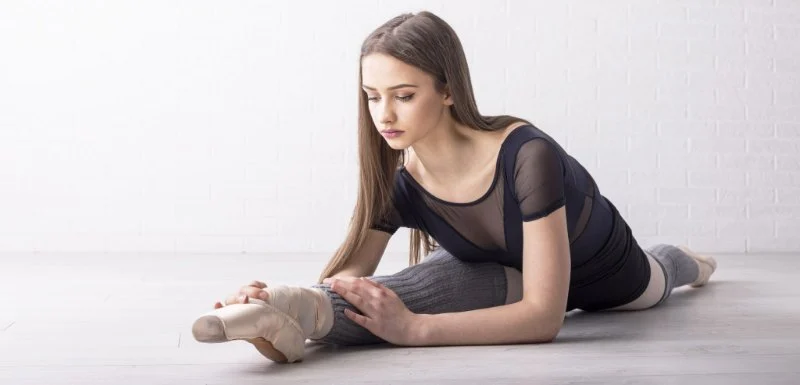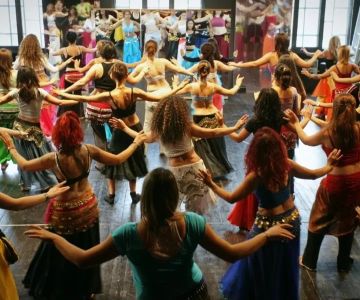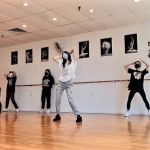
- 1- Understanding Jazz Dance and Flexibility
- 2- The Importance of Flexibility in Jazz Dance
- 3- Key Techniques to Master Jazz Dance for Flexibility
- 4- Common Flexibility Exercises for Jazz Dancers
- 5- Real-Life Case Study on Jazz Dance Flexibility
1. Understanding Jazz Dance and Flexibility
Jazz dance is a highly expressive and energetic form of dance that combines fluid movements with sharp, precise techniques. For dancers, flexibility is not just about looking graceful—it's essential for performing the various stretches, leaps, and turns that are characteristic of jazz. Flexibility allows dancers to move freely, extending their legs higher and reaching further, which enhances both performance and style.
To truly master jazz dance, flexibility must be cultivated alongside other dance techniques, such as rhythm, posture, and strength. It’s a dynamic process that requires patience, dedication, and the right approach to stretching and warm-up routines.
2. The Importance of Flexibility in Jazz Dance
In jazz dance, flexibility plays a critical role in a dancer’s ability to execute a wide variety of moves, from high kicks to fluid body rolls. Without sufficient flexibility, movements can become stiff and restricted, limiting the dancer’s ability to express themselves fully through their body.
Key Benefits of Flexibility for Jazz Dancers
- Enhanced Range of Motion: Flexible joints and muscles allow for a greater range of motion, which is crucial for executing powerful leaps, spins, and dynamic floor work.
- Injury Prevention: Flexibility helps reduce the risk of injury, particularly strains and sprains, by ensuring muscles and ligaments are properly stretched and prepared for high-intensity movements.
- Improved Technique: Mastering flexibility allows you to perform jazz moves with precision and control, improving overall technique and style.
3. Key Techniques to Master Jazz Dance for Flexibility
Improving flexibility in jazz dance doesn’t happen overnight. To enhance your flexibility, there are key techniques and principles that need to be followed. Here’s a guide to help you get started:
1. Warm-Up Properly
Before diving into stretching or dance routines, always perform a proper warm-up. A warm-up increases blood flow to the muscles and prepares them for the physical activity ahead. A good warm-up can include light cardio such as jogging or jumping jacks, followed by dynamic stretches like leg swings or arm circles.
2. Stretching with Purpose
When it comes to flexibility, static stretching (holding a stretch for 20–30 seconds) and dynamic stretching (active movements that stretch the muscles through their full range of motion) both play vital roles. Focus on stretches that target key muscle groups used in jazz dance, such as the hamstrings, hips, and lower back. These areas are particularly important for high kicks and extended leg positions.
3. Incorporate Ballet Principles
Ballet and jazz dance share many foundational techniques. Incorporating basic ballet principles—such as proper alignment, posture, and core control—can improve both your dance performance and your flexibility. Ballet’s emphasis on controlled movements and body alignment allows for smoother transitions and greater range in your jazz dance performance.
4. Consistency is Key
Flexibility requires consistent practice. Set aside dedicated time each day or several times a week to focus on stretching and flexibility exercises. Over time, your muscles will adapt, and you'll see improvements in your range of motion and fluidity of movement.
4. Common Flexibility Exercises for Jazz Dancers
Now that we’ve covered the techniques, here are some of the most effective flexibility exercises every jazz dancer should include in their training routine:
1. Forward Fold Stretch
This basic stretch targets your hamstrings, lower back, and calves. Stand with your feet shoulder-width apart, and slowly bend forward, reaching for your toes. Hold the stretch and breathe deeply. This stretch is great for improving your splits and leg lifts.
2. Butterfly Stretch
Sit on the floor with your legs bent and the soles of your feet together. Gently press your knees toward the floor with your elbows to stretch the inner thighs. This stretch is essential for enhancing the flexibility needed for jazz leaps and extensions.
3. Lunge Stretch
Performing a deep lunge with your back knee on the floor helps stretch the hip flexors and quadriceps, which is essential for achieving full range in high kicks and deep pliés. You can also add a twist to target your spine and further increase flexibility.
4. Hip Flexor Stretch
Stand with one leg forward and the other leg bent behind you. Lower your hips toward the ground to stretch the hip flexors. This stretch is particularly useful for improving flexibility in your hips and pelvis, which are crucial for jazz dance moves like grand jetés and kicks.
5. Real-Life Case Study on Jazz Dance Flexibility
Take the story of Amanda, a dedicated jazz dancer who struggled with tight hamstrings and limited flexibility in her early training. By incorporating targeted stretches and following a structured flexibility routine that included both dynamic and static stretching, Amanda was able to increase her flexibility significantly. After six months of consistent training, she was able to perform high kicks and deep splits with ease, transforming her overall performance and earning praise from her instructors.
Amanda’s journey highlights the importance of patience, dedication, and proper technique in achieving flexibility. With the right approach, anyone can improve their flexibility for jazz dance and unlock their full potential.







 Dance Manor5.0 (11 reviews)
Dance Manor5.0 (11 reviews) Kelley's Dance Craze LLC5.0 (14 reviews)
Kelley's Dance Craze LLC5.0 (14 reviews) Royal Dance Studio4.0 (29 reviews)
Royal Dance Studio4.0 (29 reviews) Academy of Dance Arts4.0 (16 reviews)
Academy of Dance Arts4.0 (16 reviews) Pat Barton Dance Studio4.0 (17 reviews)
Pat Barton Dance Studio4.0 (17 reviews) Tip Top Ballroom4.0 (10 reviews)
Tip Top Ballroom4.0 (10 reviews) How to Master Belly Dance Explained: A Complete Guide for Beginners and Advanced Dancers
How to Master Belly Dance Explained: A Complete Guide for Beginners and Advanced Dancers Are Corsages Still a Thing at High School Dances? Here's the Truth
Are Corsages Still a Thing at High School Dances? Here's the Truth K-Pop Dance Explained: Tips from Experts | American Dance Academy
K-Pop Dance Explained: Tips from Experts | American Dance Academy Do They Have Mother-Son Dances in Schools? Understanding the Tradition and Its Meaning
Do They Have Mother-Son Dances in Schools? Understanding the Tradition and Its Meaning Zumba Workout Benefits: Tips from Experts
Zumba Workout Benefits: Tips from Experts Why Did Schools Teach Square Dancing? Cultural Roots and Educational Impact
Why Did Schools Teach Square Dancing? Cultural Roots and Educational Impact